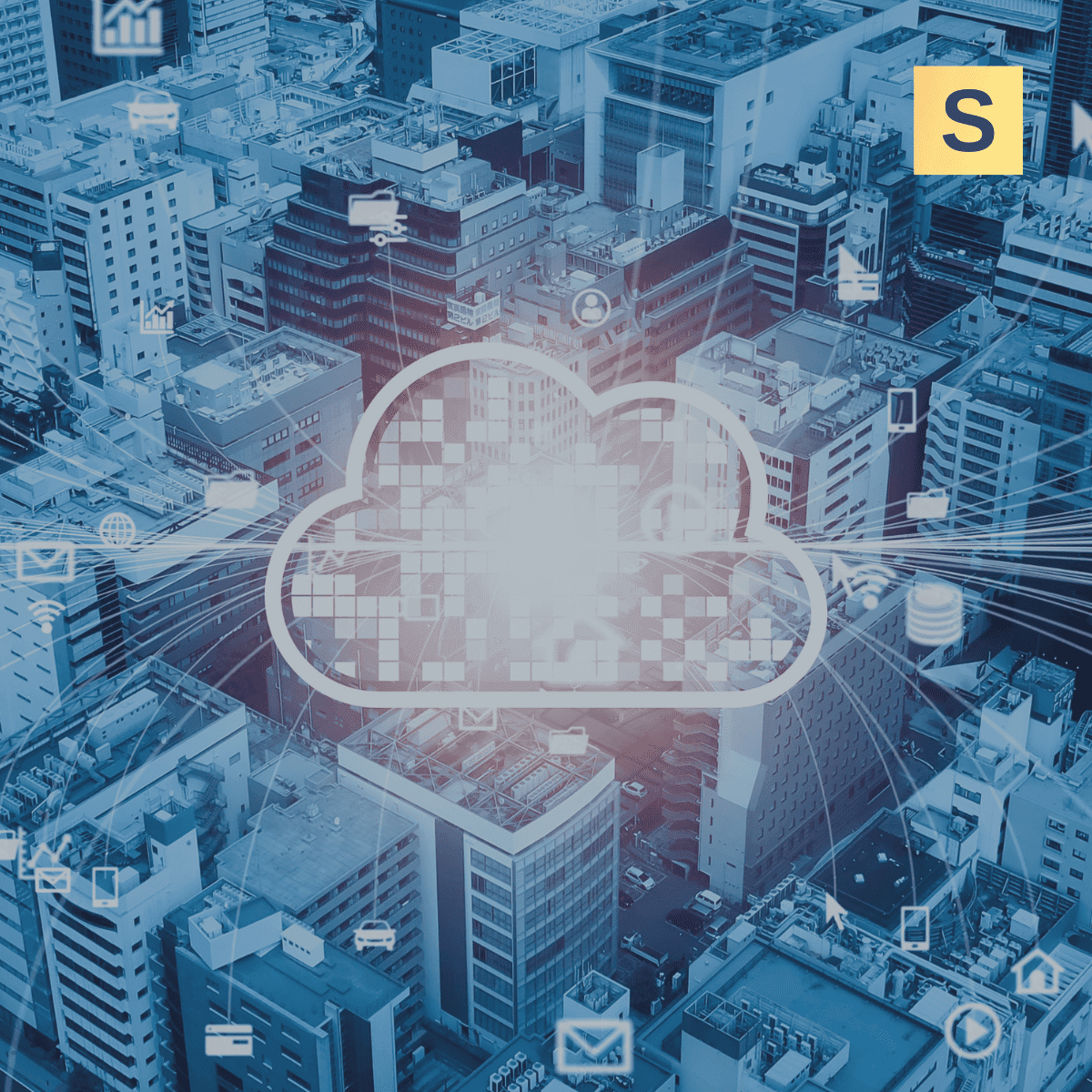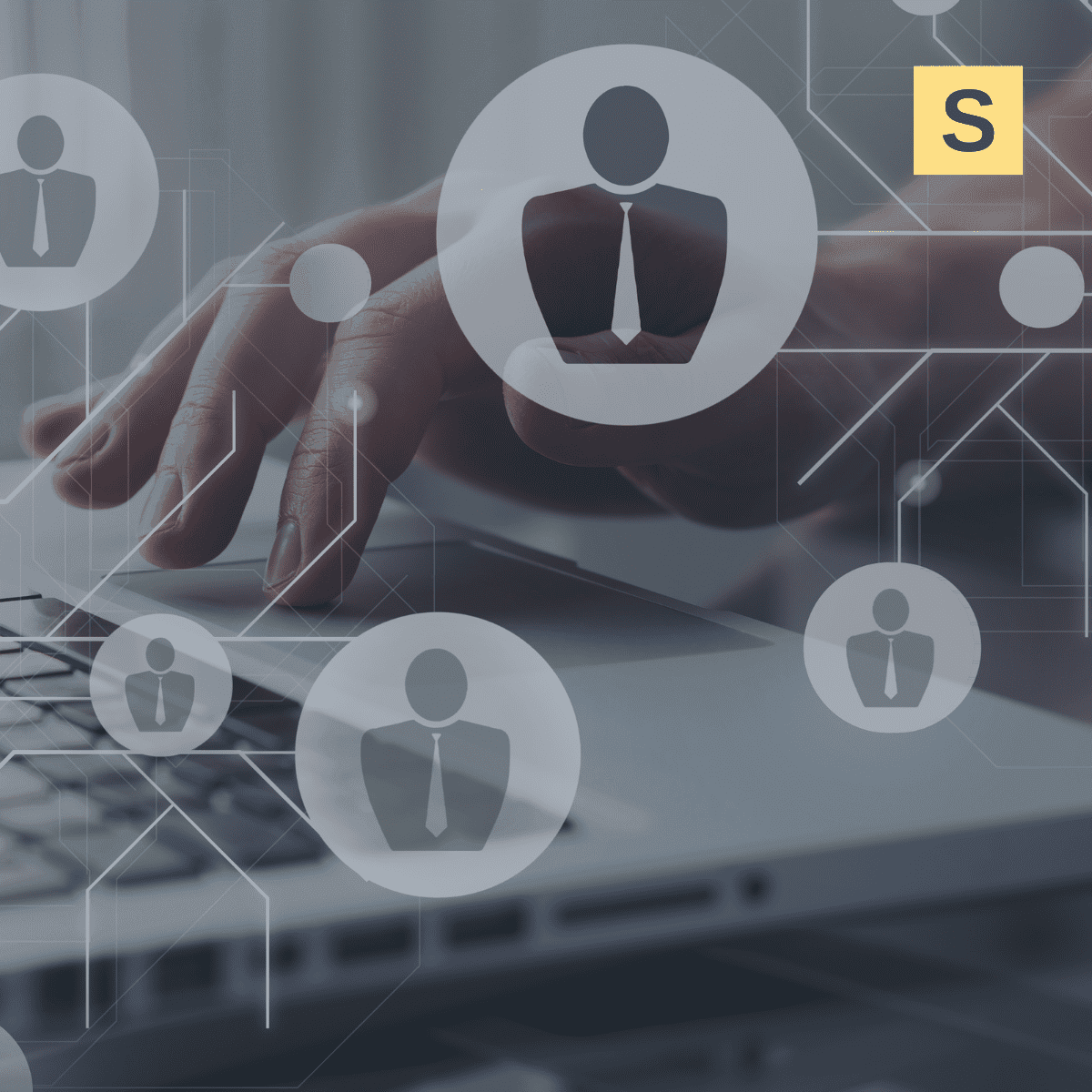Successful HR software development demands a wise combination of industry understanding and technology skills. Whether scaling a proof of concept into a market-ready SaaS, or implementing your next feature, success is predicated on making the right product and tech decisions efficiently and authoritatively.
As a company that has been in custom HR software development since 2017, Seedium possesses the proven expertise to help you bring scalable and user-friendly HR solutions to life. In this guide, we share our hands-on experience in selecting the right technology stack for your projects and overcoming challenges that may arise during the development process.
What are the Types of HR Software and Their Key Features?
Human resource management (HRM) software is a digital platform that helps companies manage their employee lifecycle and HR processes more effectively. There are different types of such solutions, some focused on more specific HR tasks and others aimed at covering the entire human resources management process.
The features you build and how your product scales depend heavily on what type of HR solution you're creating. Knowing your product category early enables you to define a clear development roadmap, prioritize features, and select the appropriate technology stack.
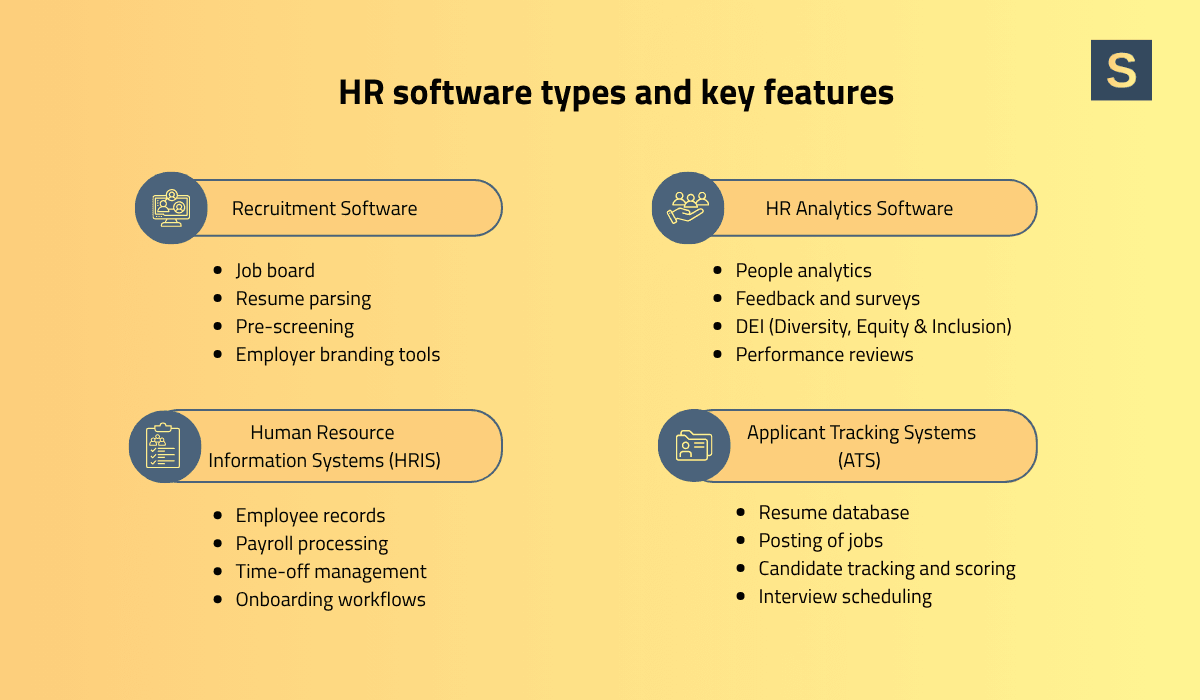
1. Recruitment Software
Recruitment platforms help organizations hire, engage, and convert top talent, even before candidates actually submit their resumes. Recruitment websites are designed to increase employer branding as well as streamline outreach and pre-screening.
Key features include:
- Job board and social media integrations
- Resume parsing and keyword matching
- Pre-screening questionnaires
- Interview scheduling and reminders
- Video interview and employer branding tools
Real-world example: OpenCulture
Seedium helped OpenCulture launch a new breed of recruitment marketing SaaS featuring an embedded video editing studio. It enables HR teams and recruiters to create compelling, branded content that gets them noticed, and provides potential employees with a genuine sense of the company culture before they apply.
2. Applicant Tracking Systems (ATS)
An ATS streamlines the hiring pipeline from application to offer. It helps HR, recruiters, and hiring managers collaborate and make decisions at every stage of the hiring process
Key features include:
- Central resume database with filtering and tagging
- Multi-channel posting of jobs
- Candidate tracking by stages of hiring
- Workflows for internal team feedback and notes
- AI-powered candidate scoring and recommendations
Real-world example: AI Ignition
Supamatch hired Seedium to build a feature-rich ATS that offers cutting-edge features on both sides: recruiters benefit from AI-driven candidate matching, and candidates can utilize an AI resume builder to enhance their opportunities. It's a great example of a working two-sided HRTech product.
3. Core HR or Human Resource Information Systems (HRIS)
HRIS is the infrastructure that keeps your behind-the-scenes processes humming. Companies typically deploy HRIS software after hire to automate every employee process, including payroll, benefits, and compliance.
Key features include:
- Centralized employee records
- Payroll processing and tax calculation
- Time-off management and attendance tracking
- Onboarding workflows and checklists
- Document storage and compliance tracking
Companies must ensure their HRIS systems are highly secure, compliant, and scalable, especially as they grow and expand globally.
4. HR Analytics and Intelligence Platforms
These platforms enable HR teams to be more strategic by utilizing people data. They're not merely administrative functions, but offer excellent insights into team performance, engagement, retention, and company culture.
Key features include:
- Real-time people analytics dashboards
- Feedback and surveys
- DEI (Diversity, Equity & Inclusion) metrics
- Performance reviews and 360-degree feedback
- Team alignment reports and culture-fit assessments
Real-world example: Cultcha
We helped Cultcha rebuild its HR analytics platform from the ground up, addressing security, performance, and UX issues. The end-product was a culture-matching engine, executive summary reports powered by OpenAI, and improved performance dashboards.
How to Build HR Software: A Step-by-Step Roadmap
Building a scalable HRTech product is not merely about having clean code, but more about mapping technology to actual HR requirements, resolving compliance issues, and building an experience that folks are willing to use. HR software development process can differ depending on the type of solution you’re developing, but the fundamental steps don't change. Here's how to drive them with clarity and confidence.
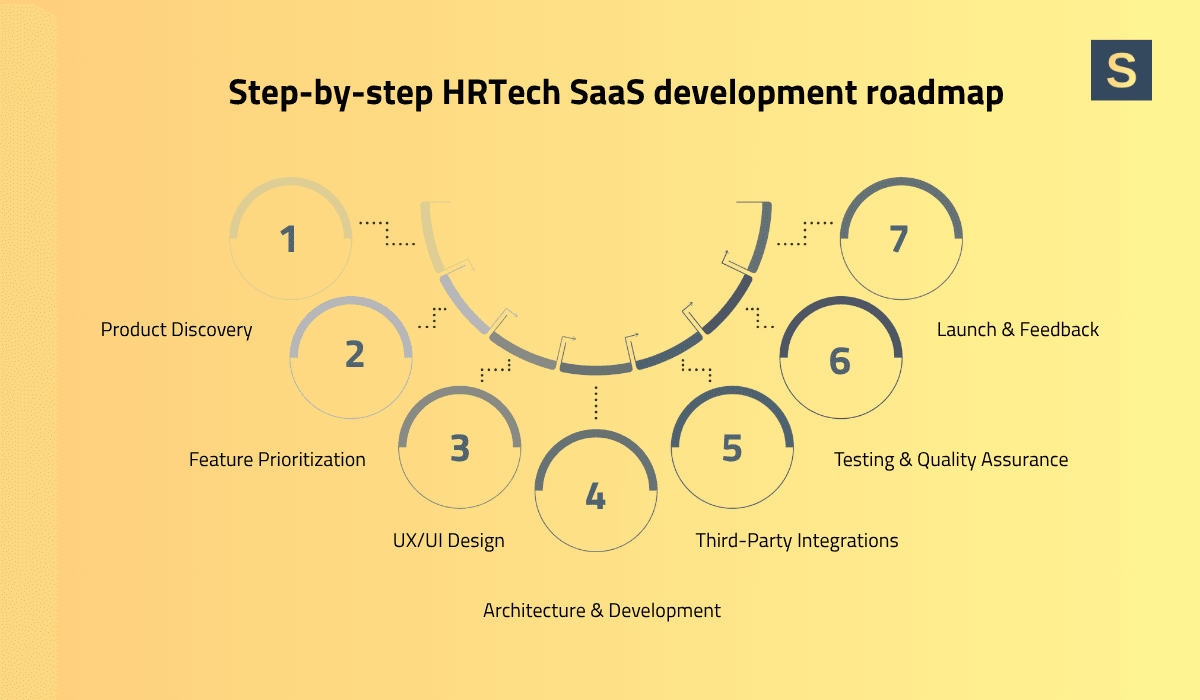
1. Discovery & Product Strategy
You need a strategic vision in order to write your first screen or your first line of code. The purpose is to define business goals in alignment with technical possibility and identify any risk or limitation that would be there beforehand. A successful discovery phase lays the groundwork for smarter planning, enhanced documentation, and faster time-to-market.
This includes the following:
- Know your business goals
- Develop user personas
- Conduct competitive benchmarking
- Check compliance requirements
- Choose your go-to-market model
Professional advice: At Seedium, we offer our clients the Discovery Phase package to help them finalize their product concept, validate it, and create a clear development roadmap. Our business analysts, UX designers, and software architects work together to align your business goals with current technology solutions to minimize risks and optimize your budget.
2. Feature Prioritization & MVP Scope
Implementing everything live simultaneously can slow down time-to-market. It's a value versus complexity prioritization issue. Start by constructing your core value proposition.
There are different approaches to prioritizing features that can help you if you decide to conduct the Discovery phase in-house.
- Value vs. Complexity model allows you to choose features that return the greatest business value with the lowest development effort.
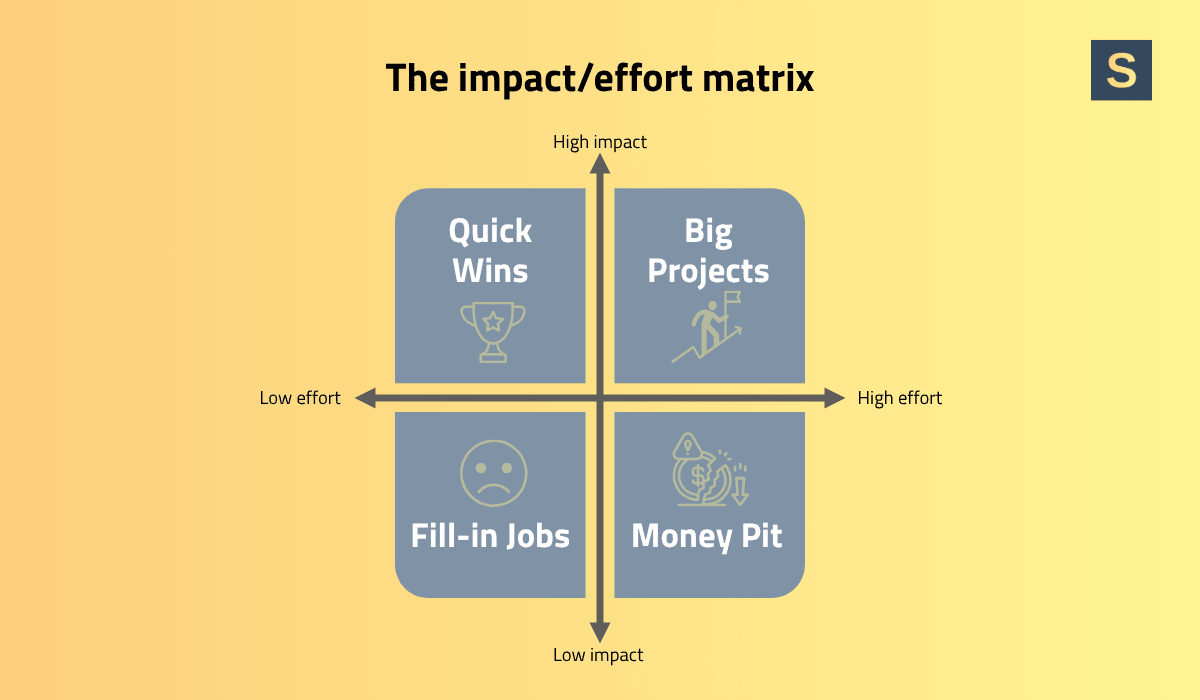
2. The RICE method drives prioritizing features based on four factors like Reach, Impact, Confidence, and Effort. Using the formula, you can calculate a numerical value for the RICE score, which provides a more objective comparison of different functions.
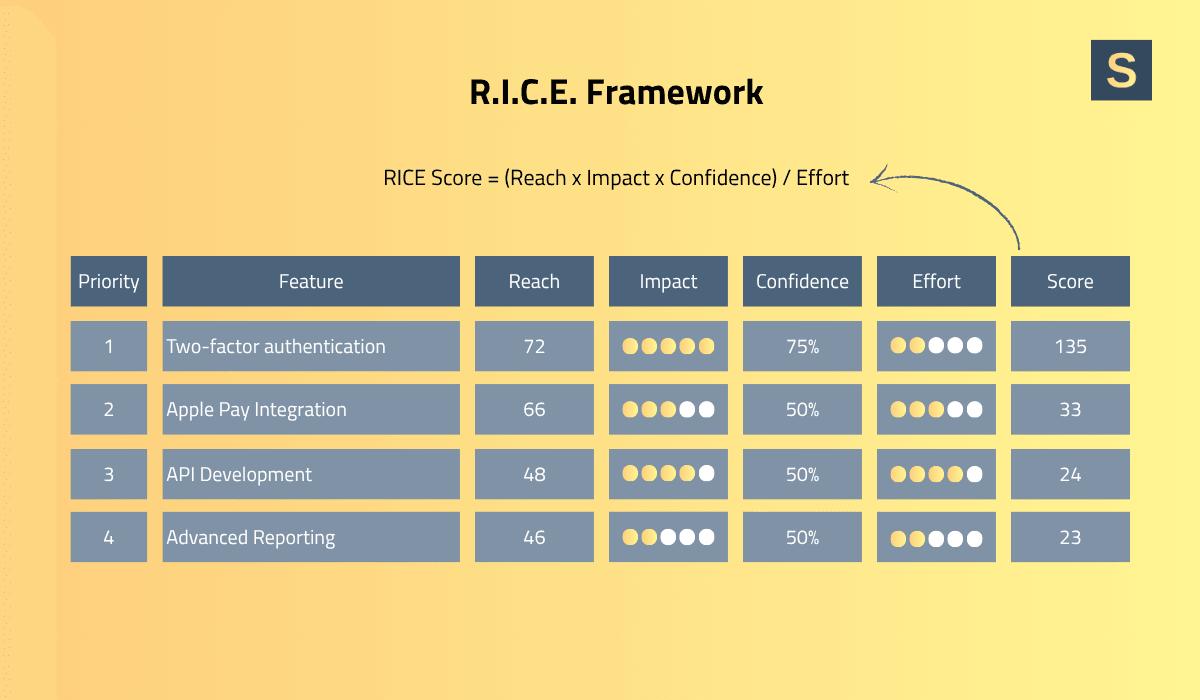
- Story Mapping allows you to focus on user experience during the feature prioritization rather than organizing features by internal processes or technical complexity. You describe the stages of the user journey and place the features in order of importance under each step, top to bottom.
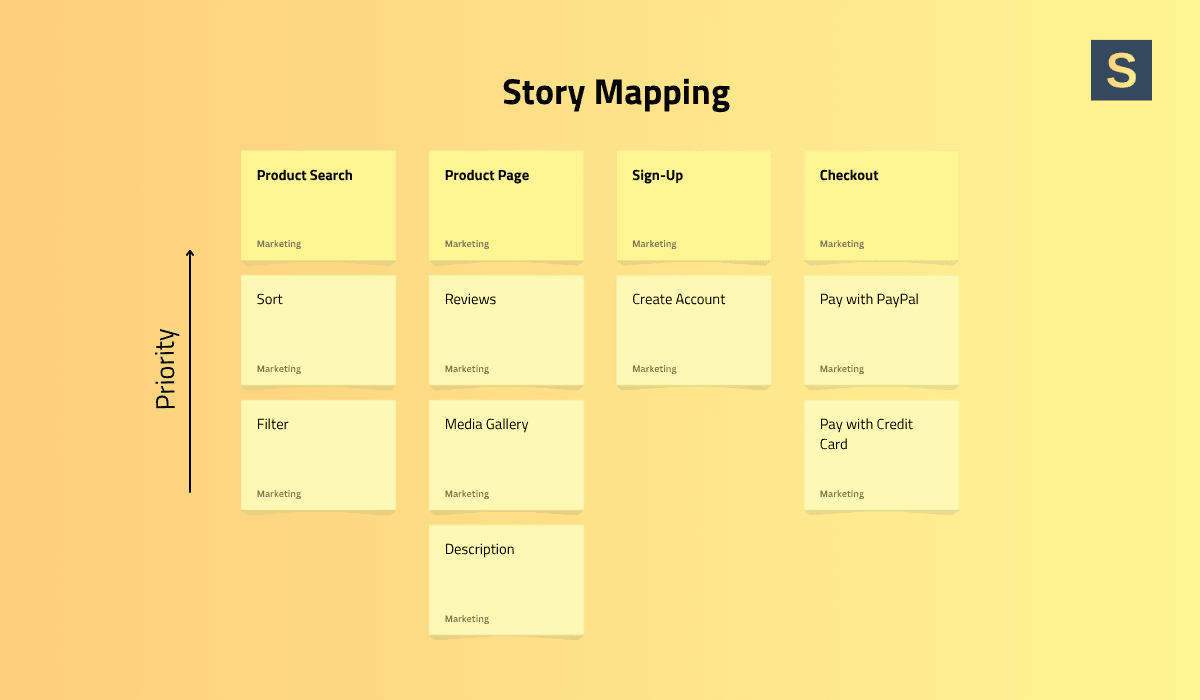
Professional advice: Your MVP should reduce risk and validate core assumptions, not just deliver functionality. That’s why you should focus on features that test critical technical and market hypotheses, and enable fast feedback to guide future development.
3. UX/UI and System Design
A smooth user experience is break-or-make in HRTech if your users are anywhere from HR personnel to applicants. The interfaces have to be simple and accessible because any slight resistance will cause user drop-off or reduced platform adoption.
- Identify critical user roles and their usage of the system.
- Chart out critical user journeys such as posting a job, searching candidates, or giving feedback.
- Transform scenarios into wireframes, then further elaborate into high-fidelity mockups and clickable prototypes.
- Specify the system logic, including user permissions, workflows, and interdependencies among main data entities.
4. Architecture & Development Setup
Making the right architecture decision early avoids expensive changes later on. Proper system architecture facilitates scalability, security, and maintainability, which are necessary for HR products that handle sensitive data and offer different user roles.
This process includes:
- Structure decision: a monolith for simplicity upfront, microservices for scaling, serverless for rapid MVPs.
- Planning integrations: ATS APIs, payroll solution, job boards, SSO.
- Setup environment: CI/CD pipelines, code repositories, and environment setups.
The secret is to avoid overcomplicating things from the start, while still thinking about scalability from day one. It may seem confusing, but the balance is possible if you have a clear understanding of the requirements and a clear development plan.
Read also: How to Build Scalable Multi-Tenant SaaS Architectures: Tech Leader’s Guide
5. Development & Third-Party Integrations
Software developers implement core functionality according to the defined user stories and system design. While team composition and approaches may vary depending on the scope of the project, here are some general tips:
- Develop in agile sprints, shipping usable features early and often.
- Build front-end and back-end layers in parallel on top of well-documented APIs.
- Automate simple repetitive tasks with AI tools for speed and efficiency.
Poor implementation can destroy the best idea, so enlist the support of trusted developers who understand the specifics of building HRTech products to get the maximum return on investment.
Read also: AI in Human Resource Management - Use Cases and Implementation
6. Testing & Quality Assurance
Development teams must conduct thorough testing throughout the entire process to ensure data integrity and seamless functionality. Continuous testing not only detects flaws early on but also ensures continuous compliance with security and privacy laws.
We recommend conducting unit, integration, and end-to-end testing regularly, as well as testing with real users for usability. HR teams need to get clear value from the product, with intuitive flows to facilitate their day-to-day work and data-driven decision-making.
7. Launch & Feedback Loop
Successful teams launch deliberately and focus on listening closely to user feedback. Such an approach will help you refine the product over time, rather than trying to get everything done at one time.
Here are some strategies that can help you:
- Launch a small or private beta to a testable segment of users.
- Gather feedback from recording sessions, surveys, and user interviews.
- Make your next release cycle feedback-based changes.
Professional advice: Your early users are your greatest product champions. Make sure to implement engaging little features that would motivate them to communicate with you about their experience and lead your next developments. This can include in-app feedback tools like surveys, rating prompts, chatbots, comment sections, personalized notifications, early access programs, or beta features.
HRTech end-users like hiring managers, employees, and job applicants require clean, quick, and simple software to use. Through a careful, user-centered process, you can build a platform that not only works but really has power for your clients.
What is the Best Tech Stack for Developing HR Software?
Your tech stack will determine how quickly you can build, how easy it is to scale, and how expensive maintaining your product will be. In HRTech, data sensitivity, integrations, and custom workflows are most critical, so a secure, flexible base is most critical.
However, there is no one-fits-all technology toolbox. The choice depends on project requirements, the complexity of business logic, and your team’s skillset. If you need any assistance in defining a perfect tech stack for your product, feel free to reach out for a consultation.
Challenges and Best Practices for HRTech Software Development
Building HRTech software involves some challenges like any other software project. How well your development team understands them is largely a guarantee of your product's success. So let's talk about the key challenges and best practices to overcome them.
5 Common Challenges in HR Software Development
Building HR software may look straightforward, but behind every onboarding flow or resume match is a stack of technical and compliance hurdles. Some of the most frequent challenges include:
- Scalability Bottlenecks: As user counts and volumes of data increase, the performance of a software application can suffer. That’s why it’s crucial to build scalable architecture from day one to avoid unexpected downtimes.
- Data Security: HR applications handle confidential employee data and must adhere to requirements such as GDPR, SOC 2, etc. Make sure you learn more about regulations related to your market and add this to the list of project requirements.
- Complex Integrations: Integrating tools such as calendaring software, ATS, payroll systems, and analytics requires careful planning to ensure seamless data flow, compatibility between platforms, and robust security measures to protect sensitive information.
- Workflow Complexity: HR workflows do not fit into a one-size-fits-all model; customization and conditional workflows are inevitable. For an MVP, start with simple, easily adjustable workflows that cover the most common use cases, allowing you to gather feedback before adding more complex customization.
- Analytics and Reporting: HR data comes from multiple sources and formats, making it hard to consolidate, clean, and analyze accurately. Use standardized data models and integrate automated data validation processes to overcome this issue.
Best Practices for HR Software Development
Finally, we want to share some best practices for building HR software solutions to help you meet market expectations and the latest HRTech trends:
- Implement RBAC (Role-Based Access Control) to help manage permissions among hiring managers, recruiters, and administrators.
- Store records of all activity for security and compliance audits.
- Follow WCAG guidelines for accessible design.
- Ensure the software is fully functional on mobile devices for on-the-go access.
- Use caching, load balancing, and database indexing to ensure fast response times, especially during peak usage.
- Build for AI integration from the start to make sure you can add smart functionality later without costly rework.
- Offer clear user guides, API documentation, and onboarding resources.
- Develop backup, recovery, and failover strategies to minimize downtime and data loss in case of system failures.
Build and Scale Your HR Software with Seedium
At Seedium, we build custom HRTech products that are scalable, secure, and easy to use. From AI-powered resume creators to advanced applicant tracking systems and culture analytics software, our teams have hands-on experience in turning visionary ideas into high-performing digital solutions.
Whether you're a startup validating your MVP or an enterprise HR software firm planning your next feature set, we have tailored assistance from product strategy and UX design to full-cycle development and post-launch support. Our proven approach to HR tech SaaS development involves careful feature prioritization, architecture planning, and iterative testing to ensure your custom HR software meets both business and compliance needs.
Feel free to check out our HR software development services and contact us if you believe our services can strengthen your product development!


